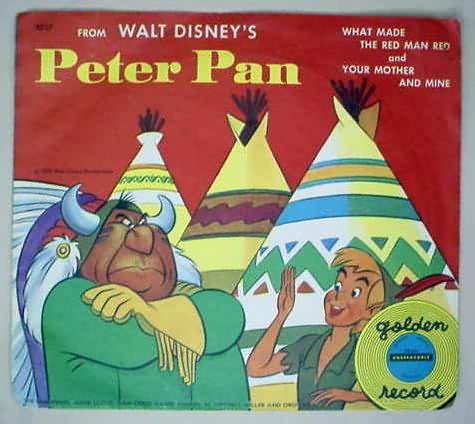Good article on racist cartoons
Race and Ethnicity in American AnimationThis continued ambivalence toward nonwhite peoples got its greatest boost by the arrival of television: it was free, on an average of five to seven hours a day, and a major source of ideology dissemination. Made-for-television cartoons continued the trend of stereotyping racial/ethnic groups that earlier theatrically-released animation established. Native Americans were depicted badly in shows like "Go-Go Gophers," in which a Teddy Roosevelt-like raccoon/Cavalryman leads a perpetual charge to eliminate the last two members of a Native American nation who--to their credit--always manage to outwit their White nemeses, but not without being portrayed as gibberish-spouting savages. Other racial/ethnic groups got their due with characters like Joe Jitsu and Go-Go Gomez (a generically Asian martial-arts expert and a mustachioed, sombrero-wearing detective) in the "Dick Tracy Show." Still other characters, like Warner Bros.' Speedy Gonzales, with his lazy, drawlingly drunken Mexican mice buddies, represent a trend that, even when portrayals of negative Black stereotypes were gradually being considered verboten, similarly racialized cartoon portrayals were allowed to continue. The ambivalence of these portrayals is obvious when one takes into consideration that, even though on the whole they are aligned with the "good guys," they still are beset with racial traits that have long been the mark of negative stereotypes. This helps to establish even further that the behavior, appearance or speech of the characters is typical of that racial/ethnic group, and biological determinism shows up again.. Thus, with an extraordinary growth in ready access to America's living rooms, the stereotype becomes even more solidified in the popular mind.
With the advent of home video players, many theatrical feature films that were rarely shown on network television are now readily available on tape and DVD. This too is a double-edged sword: some of the more controversial Disney films, for example, long the subject of debate due to questionable depictions of racial/ethnic groups, are readily available for rental or purchase; this reintroduces films to new young audiences who otherwise might not see them. In other words, this new availability gives these films an opportunity to reestablish the White-dominated ideology of racial superiority over nonwhite peoples, all while under the seemingly benign Disney banner.
Disney, that most family-friendly of entertainment conglomerates, has not, as suggested above, emerged unscathed from charges of being racially intolerant. A glance back to early Disney features will find several instances of negatively racialized characterizations. Oft-discussed examples include 1941's Dumbo (where rowdy crows flit around the title character and talk a very Black-derived jive chatter) to later features like Peter Pan (1953), where a low point is a musical number called "What Makes the Red Man Red," whose pidgin-English lyrics go:
Once the Injun didn't know
All the things that he know now
But the Injun he sure learn a lot
And it's all from asking "How"
What made the red man red
Let's go back a million years
To the very first Indian Prince
He kiss a maid and start to blush
And we've all been blushin' since


No comments:
Post a Comment